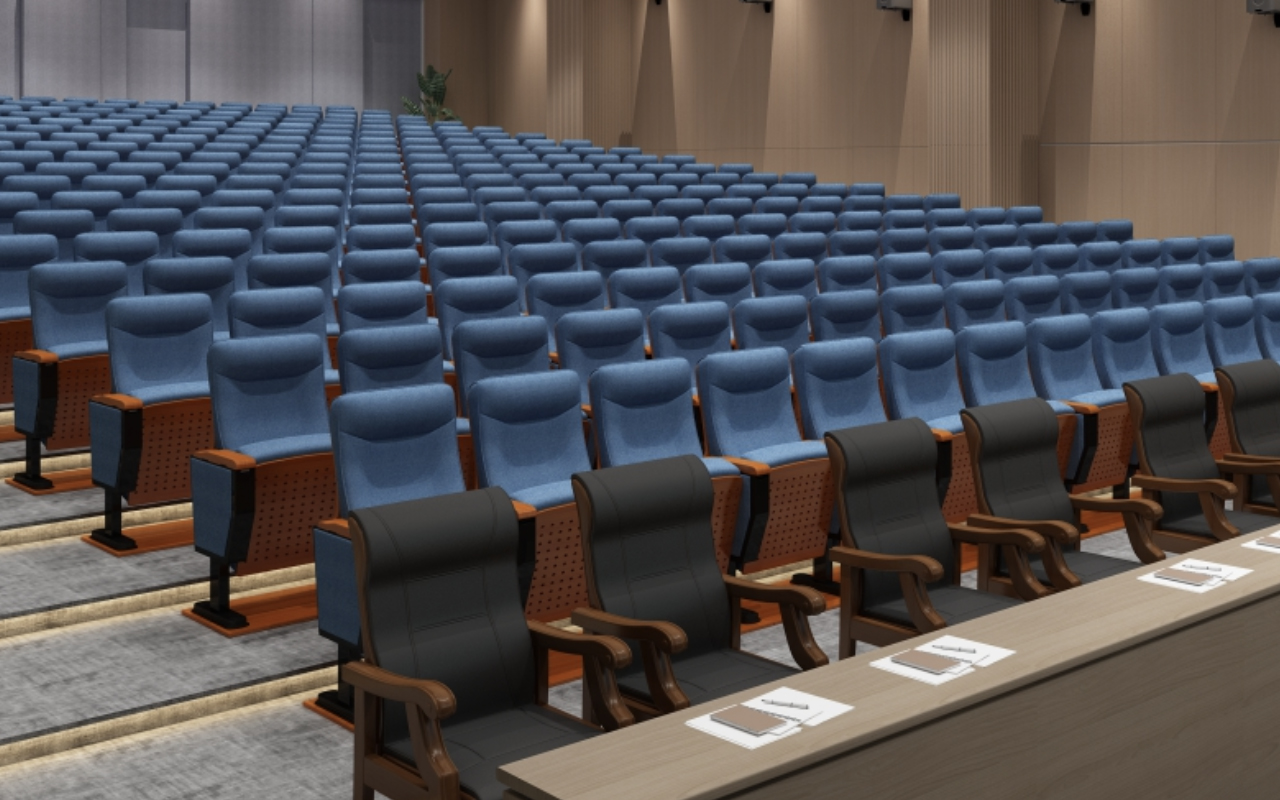Auditorium seating is no longer just about having rows of chairs bolted to the floor. In recent years, venues from school auditoriums to large theaters have seen innovative changes in how seating is designed. Modern auditorium seating focuses on enhancing the audience experience while also meeting practical needs of venue operators. Three key trends are shaping the industry: the integration of smart technology into seats, the use of modular designs for flexibility, and a push for sustainable materials and eco-friendly manufacturing. These trends are transforming auditorium chairs from static fixtures into dynamic, tech-enabled, and environmentally conscious components of venue design.
Smart Seating Innovations
“Smart” seating refers to auditorium chairs equipped with modern technology to improve convenience and the overall experience for attendees. One popular innovation is integrating power and connectivity into the seats. For example, many new auditorium seats come with built-in USB charging ports or power outlets so that audience members can charge devices during a conference or long event. Some advanced designs even include features like interactive touch screens on seat-backs or armrests, and sensor-controlled lighting that can guide people to their seats in a dark theater. Leading manufacturers are experimenting with connected seating that can collect data or be managed centrally – imagine being able to check via a system which seats are occupied or adjust all seat lights with a single command. Spring Furniture Co., for instance, has developed “smart” auditorium chairs with features such as built-in charging ports and wireless connectivity to enhance the attendee experience . In venues like cinemas, premium theaters have started offering reclining smart seats with call buttons for service. While not every auditorium needs high-tech chairs, this trend indicates a move toward more interactive and convenient seating solutions.
Modular and Flexible Design
Another major trend is the shift toward modular seating designs that offer flexibility for different events. Traditionally, auditorium seating was fixed in place, which limited how a space could be used. Now, many venues want seating that can adapt. Modular seating systems allow sections of seats to be reconfigured, added, or removed as needed. For example, a school might have an auditorium that also serves as a gym or multipurpose hall – with retractable or fold-away seating, the space can easily transform from a lecture setup to an open floor for sports or assemblies. Some modern auditoriums use telescopic seating rows (bleacher-like systems that can fold out or retract mechanically). Even in fixed seating layouts, chairs might be designed in units that can be installed in different arrangements or moved during renovations without much hassle. The demand for multi-functional seating that can adapt to different event formats is surging . In practice, this means venues are looking for church seating that maximizes space usage: for instance, removable seats or those that can be stored away to create more floor area when needed. Modular design also includes the idea of interchangeable components – if one seat is damaged, it can be replaced without affecting the entire row. Overall, flexibility is key: auditorium seating is expected to accommodate everything from a school play or a movie screening to a community meeting or banquet. This trend helps venues get the most out of their space.
Sustainable Materials and Eco-Friendly Approach
Sustainability has become a significant focus in auditorium seating development. Manufacturers and venues are increasingly seeking eco-friendly materials and production methods for chairs. This can be seen in the growing use of recycled or renewable materials – for instance, seat plastic made from recycled polymers, or wood accents sourced from sustainably managed forests. High-quality auditorium chairs have long lifespans, but there is still concern about their environmental footprint both in manufacturing and eventual disposal. To address this, companies are introducing designs that are easier to recycle or refurbish. There is also an emphasis on reducing harmful chemicals: using low-VOC paints and adhesives, and selecting fabrics that are durable but don’t off-gas unhealthy fumes. According to industry reports, leading seating manufacturers are rolling out a wave of sustainable auditorium seating options, shifting toward eco-friendly materials and greener production processes . In practice, this might mean using powder-coated metal frames (which have fewer emissions than traditional paint), or cushioning made from bio-based foam. Another aspect of sustainability is designing for longevity – a chair that lasts decades before needing replacement is more environmentally friendly than one that wears out in a few years. Some auditorium seats are now built with replaceable upholstery or components, so that if fabric wears out, it can be changed without throwing away the whole chair. This ties into modular design as well, contributing to a more circular economy where parts are reused rather than discarded. Finally, sustainability isn’t just about materials – it can also involve the manufacturing process (reducing waste in production) and shipping (using efficient packaging, etc.). All these efforts in making seating “greener” align with many venues’ goals to reduce their environmental impact.
Post time: Apr-23-2025








